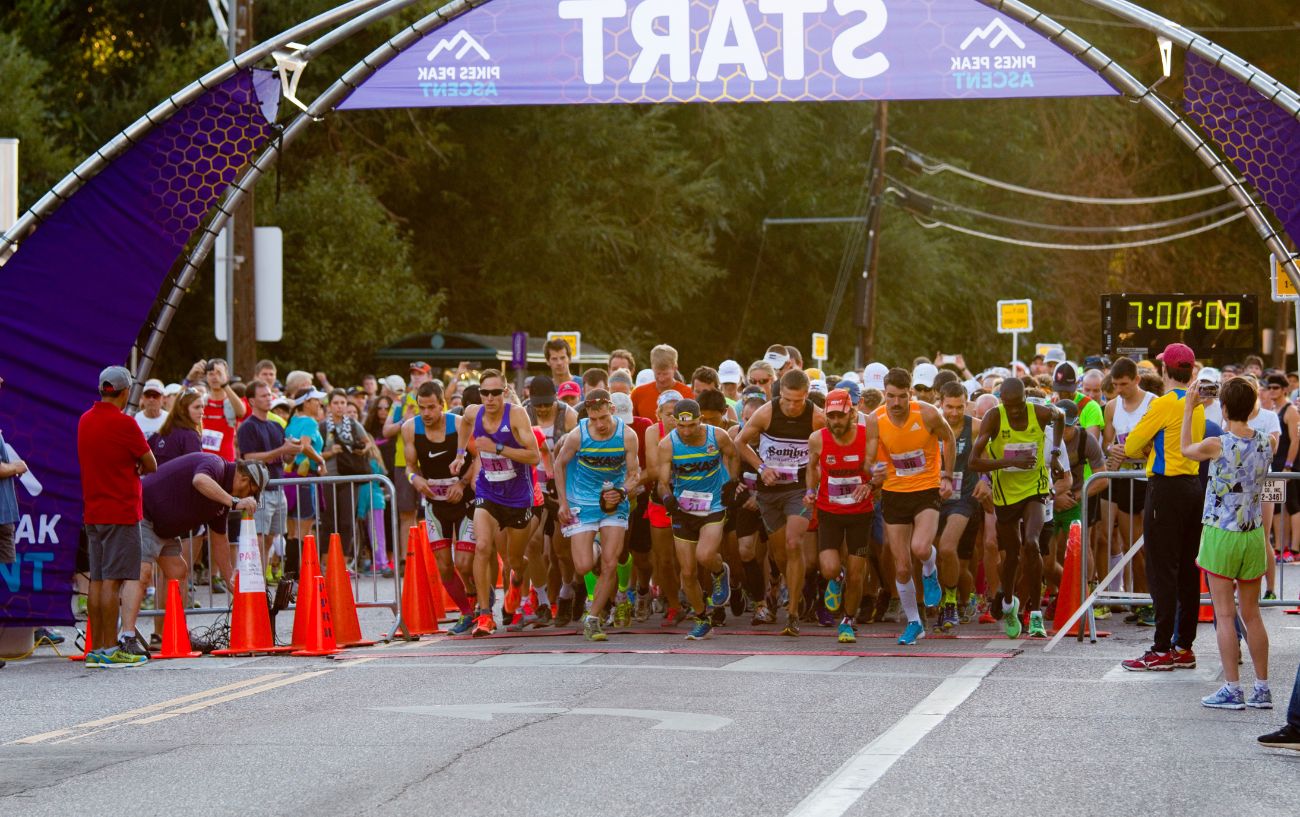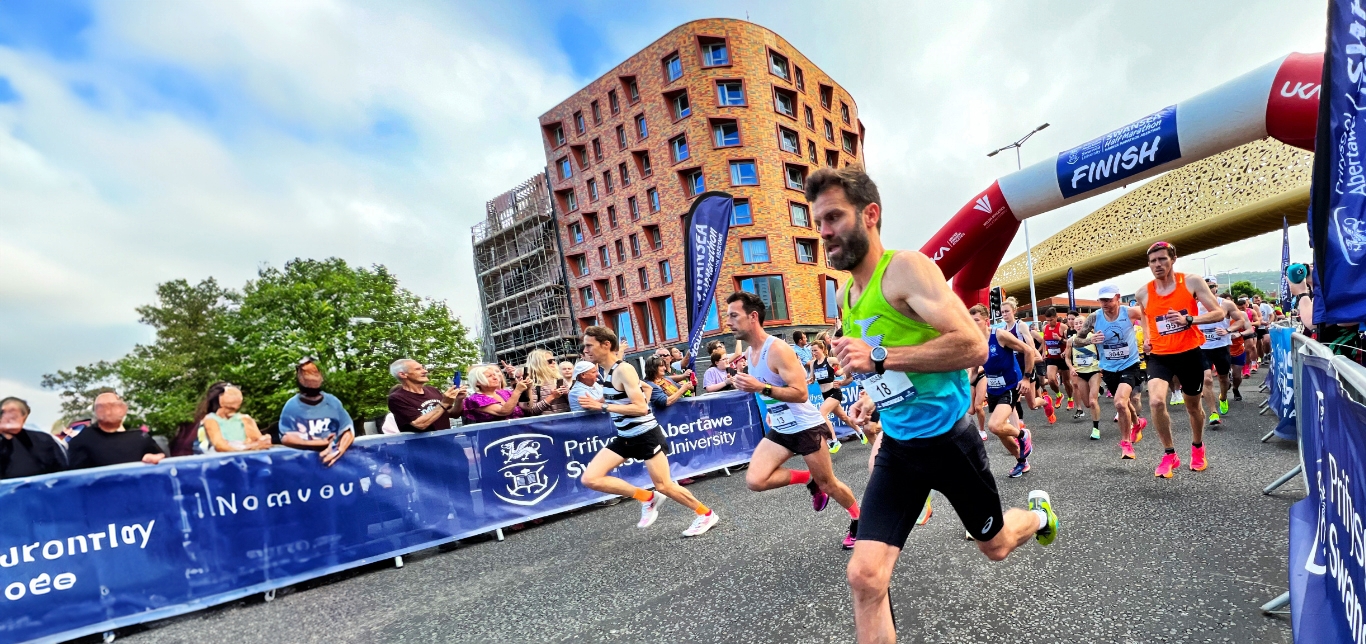

Featured
How Many Meters In Half Marathon
Modified: August 21, 2023
Discover how many meters are in a half marathon on our featured website. Get valuable insights, tips, and training techniques to conquer this challenging distance.
Introduction
Welcome to the world of half marathons! If you’re a runner or someone who is interested in the sport, you may have come across the term “half marathon” at some point. But what exactly is a half marathon, and how long is it? In this article, we will delve into the details of half marathons, particularly focusing on the distance and how it can be converted to meters.
A half marathon is a long-distance race that covers half the distance of a full marathon. It is a popular choice among runners of all levels, from beginners to seasoned athletes. The half marathon distance offers a challenging yet achievable goal for many individuals who want to push their limits and test their endurance.
Participants in a half marathon cover a distance of 13.1 miles or 21.0975 kilometers. This race requires a combination of cardiovascular fitness, stamina, and mental strength. Many races take place in various locations around the world, attracting thousands of participants and creating a vibrant atmosphere of competition and camaraderie.
Now you might be wondering, why do we need to convert the distance of a half marathon to meters? The answer lies in standardization and accuracy. Meters are a commonly used unit of measurement, especially in the field of athletics. By converting the distance to meters, it becomes easier to compare performances, track progress, and analyze race results.
In the following sections, we will explore different methods to calculate the number of meters in a half marathon. So, whether you’re a runner curious about the distance you cover in a half marathon or a race organizer looking to measure the course accurately, read on to discover the fascinating world of half marathon distances and conversions!
Definition of a Half Marathon
A half marathon is a specific type of road race that covers half the distance of a full marathon. It is a popular and well-loved distance in the world of running events. The race typically takes place on roads or a combination of roads and trails, offering runners a mix of terrain and scenery.
The concept of a half marathon originated in the early 20th century and gained popularity over time. It serves as a stepping stone for runners who aspire to complete a full marathon but want to start with a shorter distance. Half marathons are also appealing to runners who prefer a more challenging race than a 10K or 5K but find a full marathon too daunting.
The distance of a half marathon is usually standardized at 13.1 miles or 21.0975 kilometers. This specific distance was established to provide a balanced and achievable goal for runners while still testing their endurance. It strikes a good balance between the shorter distances of 10K and 5K races and the longer, more grueling distance of a full marathon.
Half marathon races are organized all around the world, and they attract a diverse range of participants. From elite runners aiming for a podium finish to recreational runners seeking personal achievements, the half marathon welcomes everyone. Many cities and towns host annual half marathons, creating a sense of community and celebration among both runners and spectators.
One of the defining characteristics of a half marathon is the atmosphere. The energy and excitement surrounding these races are contagious. From the cheering spectators lining the course to the camaraderie among fellow runners, participating in a half marathon is an immersive experience. It pushes individuals to discover their physical and mental limits while enjoying the support and encouragement of others.
As the popularity of half marathons continues to grow, more and more people are setting their sights on this thrilling distance. Whether it’s a personal challenge, a fundraising endeavor, or a chance to explore new cities and landscapes, the half marathon offers an incredible opportunity for runners to push themselves and create lasting memories.
Distance of a Half Marathon
The distance of a half marathon is standardized at 13.1 miles or 21.0975 kilometers. This specific distance was chosen to provide a challenging yet attainable goal for runners. It strikes a balance between shorter distances like 10 kilometers (6.2 miles) and longer distances like the full marathon, which covers 26.2 miles or 42.195 kilometers.
Running a half marathon requires a significant level of physical fitness and mental endurance. It challenges runners to maintain a steady pace and stay motivated for the duration of the race. The distance allows participants to push themselves without overwhelming the body and risking exhaustion or injury.
For many runners, the half marathon is an important milestone in their running journey. It serves as a progression from shorter races like 5Ks and 10Ks, and it acts as a stepping stone for those aspiring to complete a full marathon in the future. The half marathon distance offers a sense of achievement and accomplishment, motivating runners to set new goals and continue pushing their limits.
The 13.1-mile distance also presents an ideal opportunity for recreational runners to challenge themselves and improve their overall fitness. Training for a half marathon involves gradually increasing mileage, incorporating speed workouts, and building endurance through long runs. The structured training plan not only prepares runners for the race but also helps them develop a strong cardiovascular system, build leg strength, and enhance overall stamina.
One of the advantages of the half marathon distance is its versatility. It allows race organizers to design diverse courses, taking advantage of various terrains and landmarks. Half marathons can be held in urban environments, where runners navigate city streets and landmarks, or in scenic countryside areas, offering breathtaking views and a connection to nature.
Overall, the distance of a half marathon offers a challenge that is within reach for many runners. It provides a rewarding and memorable experience, encourages personal growth, and fosters a sense of accomplishment. Whether it’s your first half marathon or your tenth, crossing that finish line after 13.1 miles is a moment of triumph and a testament to your dedication and perseverance.
Conversion of Half Marathon Distance to Meters
Converting the distance of a half marathon from miles or kilometers to meters is a common practice in the field of athletics. Meters are widely used in international track and field events, making it important to have accurate measurements for comparison and record-keeping purposes.
To convert the distance of a half marathon to meters, we need to consider the conversion factors between miles, kilometers, and meters. The standard conversion factors are as follows:
- 1 mile = 1,609.34 meters
- 1 kilometer = 1,000 meters
Using these conversion factors, we can calculate the number of meters in a half marathon. Let’s take the distance of a half marathon, which is 13.1 miles or 21.0975 kilometers, and convert it to meters.
If we start with the distance in miles, we can multiply 13.1 miles by the conversion factor for miles to meters:
13.1 miles * 1,609.34 meters/mile = 21,082.094 meters
Therefore, a half marathon is approximately 21,082 meters when measured in meters.
Alternatively, if we start with the distance in kilometers, we can simply multiply 21.0975 kilometers by the conversion factor for kilometers to meters:
21.0975 kilometers * 1,000 meters/kilometer = 21,097.5 meters
Again, we find that a half marathon is approximately 21,097 meters when measured in meters.
It’s important to note that these calculations provide an approximate value due to rounding. However, they are sufficient for most practical purposes, such as measuring race courses, comparing performance times, or analyzing training data.
By converting the distance of a half marathon to meters, we can align with the standard unit of measurement used in track and field, making it easier to compare performances across different races and events. It allows for accurate record-keeping and facilitates meaningful analysis of runners’ achievements.
Now that we have a clear understanding of how to convert the distance of a half marathon to meters, let’s explore how this conversion can be used in practice to enhance our running experiences.
Calculating the Number of Meters in a Half Marathon
Calculating the number of meters in a half marathon is a straightforward process once we have the conversion factor from miles or kilometers to meters. By using the appropriate conversion factor, we can easily determine the exact distance in meters for any given half marathon.
Let’s illustrate the calculation using an example. Suppose we have a half marathon race with a distance of 13.1 miles. We will convert this distance to meters.
Using the conversion factor of 1 mile = 1,609.34 meters, we can multiply the distance in miles by the conversion factor:
13.1 miles * 1,609.34 meters/mile = 21,082.094 meters
Therefore, the number of meters in a half marathon race that covers 13.1 miles is approximately 21,082 meters.
If we have the distance of a half marathon in kilometers instead, we can use the conversion factor of 1 kilometer = 1,000 meters. Let’s consider a half marathon race with a distance of 21.0975 kilometers:
21.0975 kilometers * 1,000 meters/kilometer = 21,097.5 meters
Thus, the number of meters in a half marathon race that covers 21.0975 kilometers is approximately 21,097 meters.
These calculations enable athletes, race organizers, and running enthusiasts to accurately measure, plan, and analyze their half marathon experiences. Knowing the exact distance in meters is particularly useful for determining pacing strategies during a race, comparing performance times, and setting goals for future events.
It is worth noting that distance markers along the racecourse may not always align precisely with the converted distance. Factors such as course design, measurement accuracy, and deviations caused by tangents or bends in the route can result in slight variations. However, these differences are generally minimal and have a negligible impact on overall performance and race experience.
By calculating the number of meters in a half marathon, we gain a deeper understanding of the distance covered and can make more informed decisions in our training and racing strategies. So, whether you’re training for your first half marathon or preparing for your next race, knowing the exact number of meters involved can help you stay focused, motivated, and prepared for the challenge.
Conclusion
Understanding the distance of a half marathon and converting it to meters is essential for runners, race organizers, and anyone interested in the sport. A half marathon is a challenging yet attainable race that covers half the distance of a full marathon. With a standardized distance of 13.1 miles or 21.0975 kilometers, it offers a balance between shorter races like 10Ks and longer races like marathons.
Converting the distance of a half marathon to meters allows for standardization and accurate comparisons in the field of athletics. By using conversion factors, such as 1 mile = 1,609.34 meters and 1 kilometer = 1,000 meters, we can calculate the exact number of meters in a half marathon. For example, a half marathon of 13.1 miles is approximately 21,082 meters, while a half marathon of 21.0975 kilometers is approximately 21,097 meters.
Knowing the number of meters in a half marathon is valuable for various purposes, including race planning, performance analysis, and setting goals. It helps runners gauge their progress, track their training, and strategize for their race day. Race organizers can use this information to accurately measure and mark course distances, ensuring a fair and standardized event for participants. This conversion also facilitates international comparisons and benchmarking in the running community.
Participating in a half marathon is not just about covering a specific distance but also about embracing the journey, pushing physical limitations, and experiencing the thrill of crossing the finish line. Whether you’re a seasoned runner or a beginner, a half marathon offers a rewarding challenge that can transform you both physically and mentally. It’s an opportunity to set goals, overcome obstacles, and join a community of passionate individuals united by their love for running.
So lace up your running shoes, embrace the training, and embark on the incredible journey of a half marathon. With the knowledge of the distance and the ability to convert it to meters, you’re equipped to take on the challenge and celebrate each step as you conquer the 13.1-mile distance.
Remember, each half marathon is a personal journey filled with achievements, camaraderie, and a sense of accomplishment. Whether you’re striving for a personal best time or just aiming to finish, the experience is invaluable. So take on the challenge, enjoy the process, and revel in the joy of completing a half marathon!









